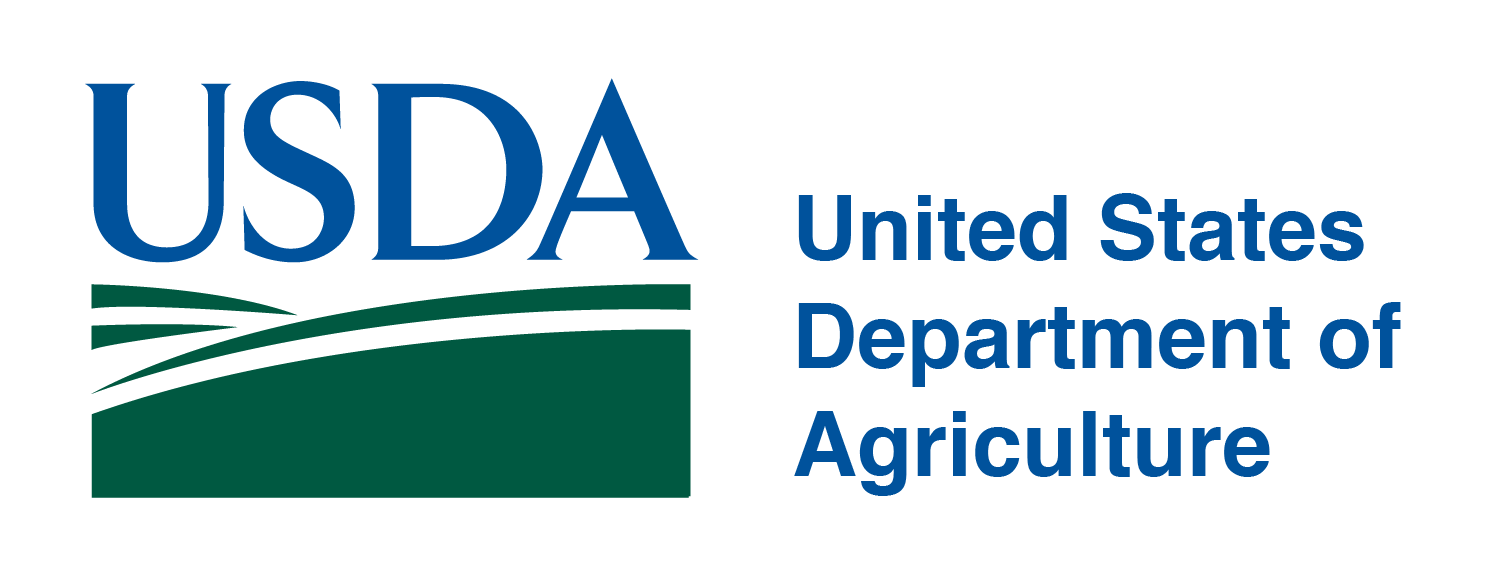- CMS: Medicare and Medicaid Programs: CY 2026 Payment Policies Under the Physician Fee Schedule and Other Changes to Part B Payment and Coverage Policies; Medicare Shared Savings Program Requirements; and Medicare Prescription Drug Inflation Rebate Program
- Public Inspection: CMS: Medicare and Medicaid Programs: CY 2026 Payment Policies under the Physician Fee Schedule and Other Changes to Part B Payment and Coverage Policies; Medicare Shared Savings Program Requirements; and Medicare Prescription Drug Inflation Rebate Program
- CMS: Medicare Program; Implementation of Prior Authorization for Select Services for the Wasteful and Inappropriate Services Reduction (WISeR) Model
- Public Inspection: CMS: Medicare Program: Implementation of Prior Authorization for Select Services for the Wasteful and Inappropriate Services Reduction Model
- CMS: Secretarial Comments on the CBE's (Battelle Memorial Institute) 2024 Activities: Report to Congress and the Secretary of the Department of Health and Human Services
- HHS: Patient Protection and Affordable Care Act: Marketplace Integrity and Affordability
- Public Inspection: HHS: Patient Protection and Affordable Care Act: Marketplace Integrity and Affordability
- Increased Risk of Cyber Threats Against Healthcare and Public Health Sector
- HRSA Announces Action to Lower Out-of-Pocket Costs for Life-Saving Medications at Health Centers Nationwide
- Announcing the 2030 Census Disclosure Avoidance Research Program
- Eight Hospitals Selected for First Cohort of Rural Hospital Stabilization Program
- CMS: Medicare Program; Hospital Inpatient Prospective Payment Systems for Acute Care Hospitals and the Long-Term Care Hospital Prospective Payment System and Policy Changes and Fiscal Year 2026 Rates; Requirements for Quality Programs; and Other Policy Changes; Correction
- CMS: Medicare Program; Hospital Inpatient Prospective Payment Systems for Acute Care Hospitals and the Long-Term Care Hospital Prospective Payment System and Policy Changes and Fiscal Year 2026 Rates; Requirements for Quality Programs; and Other Policy Changes; Correction
- CMS: Medicare and Medicaid Programs; Contract Year 2026 Policy and Technical Changes to the Medicare Advantage Program, Medicare Prescription Drug Benefit Program, Medicare Cost Plan Program, and Programs of All-Inclusive Care for the Elderly; Correction
- CMS: Medicare and Medicaid Programs; Contract Year 2026 Policy and Technical Changes to the Medicare Advantage Program, Medicare Prescription Drug Benefit Program, Medicare Cost Plan Program, and Programs of All-Inclusive Care for the Elderly; Correction
2022 County Total Population Estimates Released

The U.S. Census Bureau released today estimates of the total population as of July 1, 2022 at the county level which include both county totals as well as components of population change: births, deaths, and migration.
The Pennsylvania State Data Center’s latest brief explores changes in total county population from the April 1, 2020 Estimates Base to the July 1, 2022 Population Estimate. Key highlights include:
- Twenty-seven counties grew in population while forty declined
- Cumberland County remained fastest growing county since 2020 (+3.5%)
- Philadelphia (-36,541) and Allegheny (-17,332) counties saw largest losses
Click here to read more in this month’s brief.
National Community Health Center Workforce Survey Results Released
The National Network for Oral Health Access (NNOHA) published the results and analysis of their 2021 Community Health Center Workforce Survey. The purpose of the survey was to provide information and analysis on dental team member salaries, satisfaction, and recruitment and retention strategies in health centers throughout the country.
New Brief Released: Financial Risk Acceptance Among Rural Health Care Providers Participating in the Quality Payment Program
 This policy brief summarizes non-metropolitan and metropolitan health care providers’ participation in different tracks and subdivisions in the Centers for Medicare & Medicaid Services (CMS) Quality Payment Program and evaluates provider and patient-panel characteristics associated with financial risk acceptance.
This policy brief summarizes non-metropolitan and metropolitan health care providers’ participation in different tracks and subdivisions in the Centers for Medicare & Medicaid Services (CMS) Quality Payment Program and evaluates provider and patient-panel characteristics associated with financial risk acceptance.
Click here to open the full document.
Stories Needed for the Pennsylvania Dental Story Bank!

Have you struggled to get a dental appointment for yourself or a child? Did you visit the emergency room or urgent care for a dental problem in the last year? Has it been difficult to find a dentist that takes your insurance? PA Coalition for Oral Health (PCOH) is collecting stories from all 67 counties around dental issues in our state. Your story can help us let decision-makers know that change is needed to protect the smiles of all Pennsylvanians. We will share these stories to push for changes to the current system.
Submit your story by April 4th for a chance to win a $50 Amazon gift card!
Pennsylvania State Board of Dentistry Releases Regulation Updates
The Pennsylvana State Board of Dentistry is soliciting comments for two draft regulation updates. Comments can be emailed to RA-STRegulatoryCounsel@pa.gov no later than April 28th. The first is a draft annex relating to the administration of anesthesia and would establish requirements for a nitrous oxide/oxygen inhalation analgesia monitoring permit for dental hygienists. The second is a general update of the Board’s regulations relating to examinations, licensure, biennial renewal, inactive status, reactivation, EFDA program approval, titles, fictitious names, advertising specialties, unprofessional conduct, multidisciplinary professional practice, radiological procedures and continuing education.
Click here for the anesthesia update.
Click here for the general update.
New! A Conceptual Framework for Optimizing the Equity of Hospital-Based Emergency Care: The Structure of Hospital Transfer Networks
During COVID surges, many hospitals with capacity refused to accept transfer patients because of patients’ uninsured status and complexities associated with interhospital transfer systems, leading to overcrowding at safety-net hospitals.
Charleen Hsuan and colleagues from Penn State University and researchers from the Icahn School of Medicine at Mount Sinai propose the hospital transfer network equity-quality model (NET-EQUITY) — a conceptual framework for understanding emergency department transfers — to foster an equitable population-based system for emergency care. The NET-EQUITY framework explores emergency department networks, spotlights the factors that contribute to inequitable transfer networks, and offers policy responses.
The structure of hospital transfer networks influences patient outcomes, as defined by the Institute of Medicine, which includes equity. The structure of hospital transfer networks is shaped by internal and external factors. The four main external factors are the regulatory, economic environment, provider, and sociocultural and physical/built environment. These environments all implicate issues of equity that are important to understand to foster an equitable population-based system of emergency care. The framework highlights external and internal factors that determine the structure of hospital transfer networks, including structural racism and inequity.
The NET-EQUITY framework provides a patient-centered, equity-focused framework for understanding the health of populations and how the structure of hospital transfer networks can influence the quality of care that patients receive.
HRSA Announces Organ Procurement and Transplantation Network Modernization Initiative

The Health Resources and Services Administration (HRSA), an agency of the U.S. Department of Health and Human Services (HHS), announced a Modernization Initiative that includes several actions to strengthen accountability and transparency in the Organ Procurement and Transplantation Network (OPTN):
- Data dashboards detailing individual transplant center and organ procurement organization data on organ retrieval, waitlist outcomes, and transplants, and demographic data on organ donation and transplant;
- Modernization of the OPTN IT system in line with industry-leading standards, improving OPTN governance, and increasing transparency and accountability in the system to better serve the needs of patients and families;
- HRSA’s intent to issue contract solicitations for multiple awards to manage the OPTN in order to foster competition and ensure OPTN Board of Directors’ independence;
- The President’s Fiscal Year 2024 Budget proposal to more than double investment in organ procurement and transplantation with a $36 million increase over Fiscal Year 2023 for a total of $67 million; and,
- A request to Congress included in the Fiscal Year 2024 Budget to update the nearly 40-year-old National Organ Transplant Act to take actions such as rRemoving the appropriations cap on the OPTN contract(s) to allow HRSA to better allocate resources, and expanding the pool of eligible contract entities to enhance performance and innovation through increased competition.
“Every day, patients and families across the United States rely on the Organ Procurement and Transplantation Network to save the lives of their loved ones who experience organ failure,” said Carole Johnson, HRSA Administrator. “At HRSA, our stewardship and oversight of this vital work is a top priority. That is why we are taking action to both bring greater transparency to the system and to reform and modernize the OPTN. The individuals and families that depend on this life-saving work deserve no less.”
Today, HRSA is posting on its website a new data dashboard to share de-identified information on organ donors, organ procurement, transplant waitlists, and transplant recipients. Patients, families, clinicians, researchers, and others can use this data to inform decision-making as well as process improvements. Today’s launch is an initial data set, which HRSA intends to refine over time and update regularly.
This announcement also includes a plan to strengthen accountability, equity, and performance in the organ donation and transplantation system. This iterative plan will specifically focus on five key areas: technology; data transparency; governance; operations; and quality improvement and innovation. In implementing this plan, HRSA intends to issue contract solicitations for multiple awards to manage and improve the OPTN. HRSA also intends to further the OPTN Board of Directors’ independence through the contracting process and the use of multiple contracts. Ensuring robust competition in every industry is a key priority of the Biden-Harris Administration and will help meet the OPTN Modernization Initiative’s goals of promoting innovation and the best quality of service for patients.
Finally, the President’s Budget for Fiscal Year 2024 would more than double HRSA’s budget for organ-related work, including OPTN contracting and the implementation of the Modernization Initiative, to total $67 million. In addition, the Budget requests statutory changes to the National Organ Transplant Act to remove the decades-old ceiling on the amount of appropriated funding that can be awarded to the statutorily required vendor(s) for the OPTN. It also requests that Congress expand the pool of eligible contract entities to enhance performance and innovation through increased competition, particularly with respect to information technology vendors.
HRSA recognizes that while modernization work is complex, the integrity of the organ matching process is paramount and cannot be disrupted. That is why HRSA’s work will be guided by and centered around several key priorities, including the urgent needs of the more than 100,000 individuals and their families awaiting transplant; the 24/7 life-saving nature of the system; and patient safety and health. HRSA intends to engage with a wide and diverse group of stakeholders early and often to ensure a human-centered design approach that reflects pressing areas of need and ensuring experiences by system users like patients are addressed first. As a part of this commitment, HRSA has created an OPTN Modernization Website to keep stakeholders informed about the Modernization Initiative and provide regular progress updates.
USDA Seeks Applications for Grants to Build Community-Oriented High-Speed Internet Networks for People in Rural Areas

U.S. Department of Agriculture (USDA) Rural Development Under Secretary Xochitl Torres Small announced that USDA is accepting applications for grants to build community-oriented, high-speed internet networks for people in rural areas.
The Department is making up to $79 million in grants available under the Community Connect program. Recipients may use the funds to establish high-speed internet networks that will foster economic growth and deliver enhanced educational, health care and public safety benefits.
Grant recipients must agree to provide high-speed internet service at community-serving institutions free of charge for up to two years. These institutions include schools, libraries, fire stations and other public safety sites.
To learn more, read the full Stakeholder Announcement.
Pennsylvania Data Show Overdose Deaths May Be Declining
 An analysis by the Center for Rural Pennsylvania has shown that the number of deaths from drug overdoses may be declining in rural areas. But optimism remains cautious, as many rural areas still have overdose rates above the state average and less access to lifesaving interventions. At a recent hearing, addiction treatment providers in the state stressed the need for regulatory changes to meet rural needs. Providers testified that finding transportation to get to treatment services is a challenge and the majority of people housed at the county’s jail have substance use disorders.
An analysis by the Center for Rural Pennsylvania has shown that the number of deaths from drug overdoses may be declining in rural areas. But optimism remains cautious, as many rural areas still have overdose rates above the state average and less access to lifesaving interventions. At a recent hearing, addiction treatment providers in the state stressed the need for regulatory changes to meet rural needs. Providers testified that finding transportation to get to treatment services is a challenge and the majority of people housed at the county’s jail have substance use disorders.
Linkages Between Rural Community Capitals and Healthcare Provision: A Survey of Small Rural Towns in Three U.S. Regions

New report from USDA’s Economic Research Service
Although healthcare is one of the largest and fastest-growing sectors in the rural U.S., many rural communities suffer from poor access to healthcare, in part due to difficulties recruiting and retaining healthcare professionals.
A report issued today by USDA’s Economic Research Service, Linkages Between Rural Community Capitals and Healthcare Provision: A Survey of Small Rural Towns in Three U.S. Regions, focuses on how rural communities can attract and retain healthcare professionals. The study is based on key informant interviews and a survey of healthcare professionals in 150 rural small towns in 9 U.S. states.
Here are a few key findings from the report:
- Social capital (the value of personal and professional relationships) was widely perceived by both key informants and healthcare professionals as important for the recruitment and retention of the professionals. Many key informants and most healthcare professionals highlighted the importance of relationships with family, friends, colleagues, and patients in recruitment and length-of-stay decisions.
- Physical capital such as the availability and quality of housing, medical facilities, and equipment was widely cited as a factor, though less often than social capital.
- Human capital, reflected in the quality of both schools and healthcare professionals, is also widely perceived as important for recruitment and retention, though cited less often than social capital. Key informants more often cited the importance of school quality for recruitment—while healthcare professionals often cited the quality of the medical community, colleagues, and staff as important to accepting and retaining employment.
For more information, please refer to the full report.
